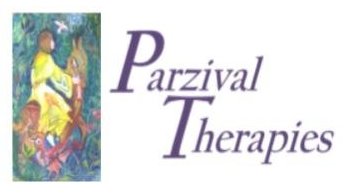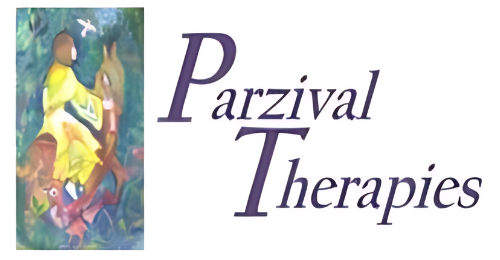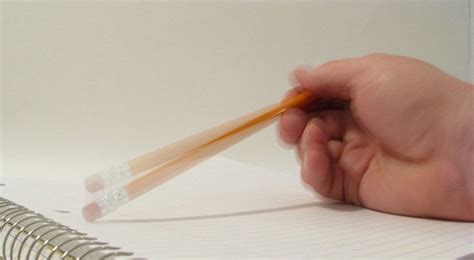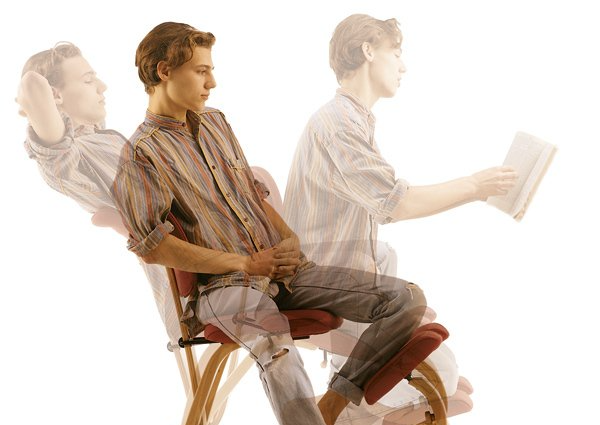Autism
A Family’s Experience of HANDLE
by Belinda Nunn
George never crawled and took his first wobbly steps at the age of two and a half; he has only recently crawled up the stairs. His fine motor skills are less developed than my sister’s ten month old son, and he still explores everything orally. George appears to feel little or no pain, and he barely reacts when he drops heavy objects on his toes, or slams a finger in the door.
I was fascinated. Did this mean that there could be other areas I could support that would in turn help George with his motor skills? I immediately got onto the website and signed up for a free introductory lecture being held locally and ordered a copy of ‘The Fabric of Autism’. The book’s author, Judith Bluestone is the founder of The HANDLE Institute, and was herself challenged by autism as a child.
George was given a sensory diet from his OT, but he would avoid many of the activities and I felt uncomfortable pushing him to take part. His motivation to try new toys or games was so low, he would lose interest quickly as he was more conscious than anyone of his body’s limitations. I was becoming frustrated by not being able to help him and again uncomfortable as I coaxed him into trying to push, or turn toys in an effort to awaken the sensitivity in his fingers. It was while discussing these challenges with another Son -Rise mum that I first heard of HANDLE® Therapy. She explained to me that whilst her son had championed many of the challenges autism brings (so much so that he has recently started mainstream school) he was still unable to hold a pen. After working with a HANDLE practitioner, and strengthening the binocularity of his eyes he was now holding a pen and beginning to write. It wasn’t that he didn’t want to hold a pen; he avoided it because he couldn’t focus his eyes adequately enough to be able to hold a pen. I couldn’t put the book down and, if you haven’t already, I urge you to read it. I was fascinated, intrigued, overwhelmed and deeply moved by what I was reading. As Bluestone describes her experiences and how she helped herself through them I was again reminded of how brave and courageous our children truly are. She eloquently explains how the repetitious and exclusive behaviors our children exhibit are direct clues as to which systems need strengthening, and that they are doing the best thing for themselves at that time to alleviate the symptoms they are experiencing.
My husband and I had already chosen not to try and prevent George from “isiming” or “stimming”, and this in turn led us to The Son-Rise Program.
We and George’s volunteers join him in these behaviors as a way to understand what he is experiencing, to create a rapport; and to build trust. Through joining him we have realized that his “isms” have a therapeutic effect for him, but after reading Bluestone’s book and attending the lecture I was being shown that these behaviors bore a direct link to specific physiological systems that were compromised. I signed up for an Introductory Course in HANDLE Therapy given by Sean Williams. It was fascinating, easy to follow, fun and importantly inexpensive! Here I learned that simple activities could strengthen compromised systems and in turn help others to function effectively. All the information was substantiated by anatomy and physiology.
Convinced this could help George, I booked an assessment with Sean Williams. After completing a detailed HANDLE questionnaire covering history, health, diet, behavior, etc, we went for George’s HANDLE assessment. It was a truly enjoyable three hours!
I don’t believe our children can be assessed in half an hour. At last here was someone in no rush, letting George take the time he needed to settle, adjust and relax in a new environment. Sean began by asking George what he would like help with and I replied! “Hey, I’m asking George! I’ve got lots of questions for you later!”, replied Sean! George quickly and easily responded to Sean’s respectful, calm and patient nature and was soon bringing him toys and happily playing with him. That was the assessment! Obviously Sean was
constantly observing and the session was DVD recorded for reflection and we were given a copy too. I sat back and enjoyed watching them together feeling relaxed and immensely proud of my son.
Other assessments have left me feeling despondent and hopeless We saw Sean a couple of days later for a presentation of what Sean had seen as areas to concentrate on and possible activities to help strengthen them. For George, the prime concern was the vestibular system, his proprioception and his autonomic nervous system. Sean explained that until these roots had taken hold the trunk could not grow, nor the branches, and least of all the fruits. Sean gently introduced the simple activities to George, and patiently taught me how to do them. George becomes the teacher as I allow him to show me when he has had enough, and by reading his subtle ‘changes of state’. George directs how much or how little, how strong or how softly. Sean amazed me as he often remarked: “See that George curled his toes? That’s enough for you, isn’t it George”. It was like watching a ‘horse whisperer’ and I soon discovered that my son was far more sensitive than I had thought! We left with ten activities specifically modified for George, and so began our HANDLE Program.
He is less wobbly, far more grounded and steady on his feet. He is also avoiding obstacles in his path. If he does fall he has begun to touch the area he just bumped. He is using both hands together when playing with toys or holding objects, instead of grabbing mine as a prop. He is chewing his food more satisfactorily. There is plenty of room for improvement, believe me, but it’s a start. And the greatest thing is that George appears to be far more confident in his body.
Last week he ran into the garden, climbed the frame, sat down and slid down all by himself. He has never done that before! The activities have evolved into our personal games together. George now recognizes them and even offers his toes, or hands in anticipation. The activities have flowed easily into his Son-Rise Program and I look forward and enjoy doing them. We have monthly check-ups with Sean to see how George is progressing and to help me be as effective as I can. The activities are always reviewed and modified or replaced depending on how George accepts them.
Over the last two months we have seen great changes that have been gradually emerging almost without us noticing. George is calmer and he spends far less time running back and forth saying “Eeeeeeeee”. At bedtime he now winds down peacefully. It’s as if he has learned how to relax. He is falling asleep in less than thirty minutes and staying in his bed. It used to take him hours!
I thoroughly recommend getting your child seen by a HANDLE Practitioner. I have learned so much more about my son from the past two months and continue to do so. It has been an enjoyable, stress-free process for us and more importantly for George. It is relatively inexpensive considering the amount of time a Practitioner spends with a child and the work involved in putting a program together. Best of all, it’s helping George and it’s empowering for me and my husband to have another way to help and bond with our beautiful boy.







